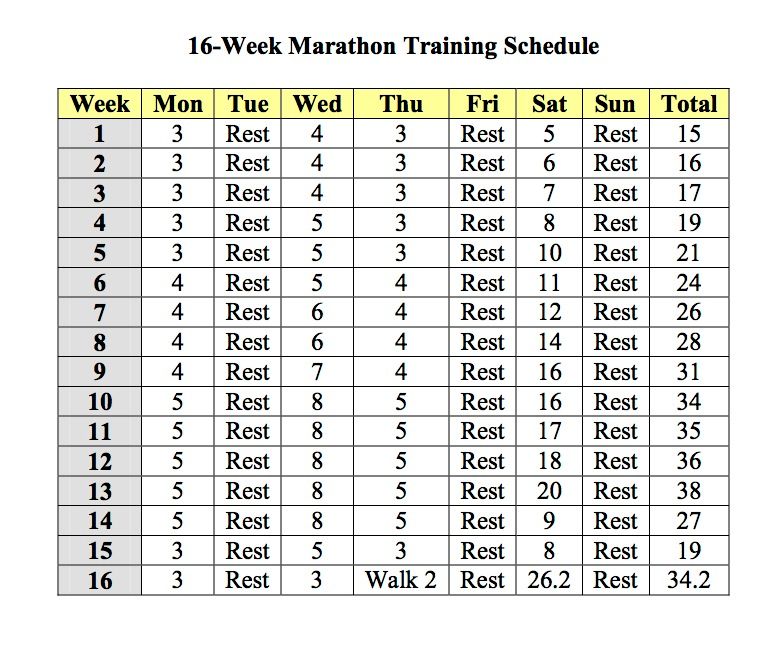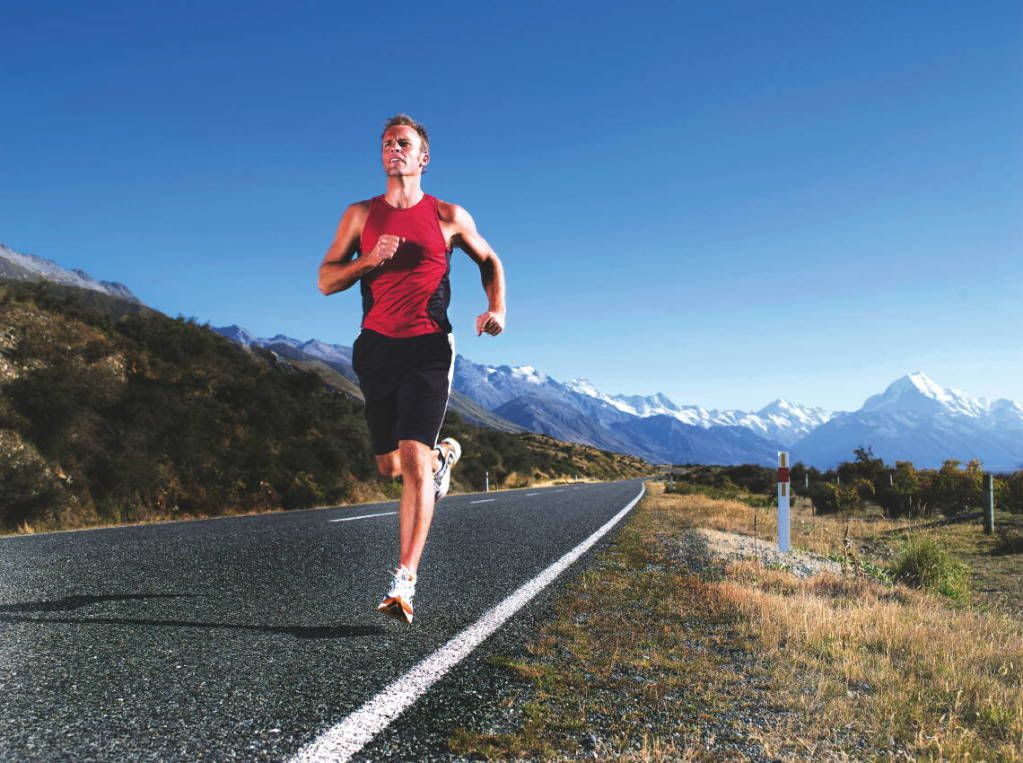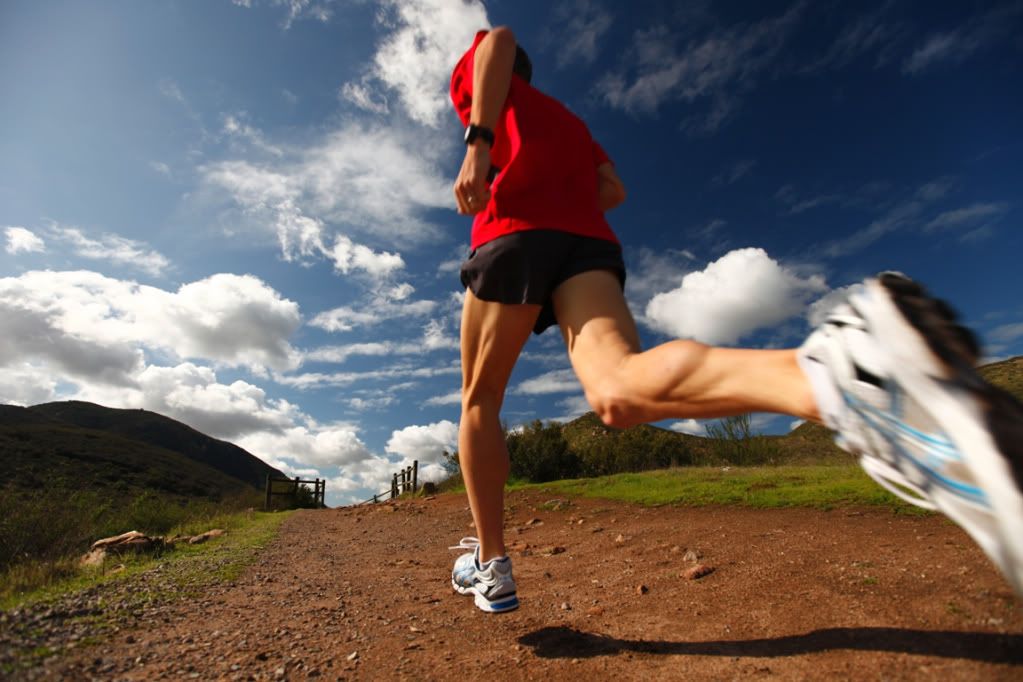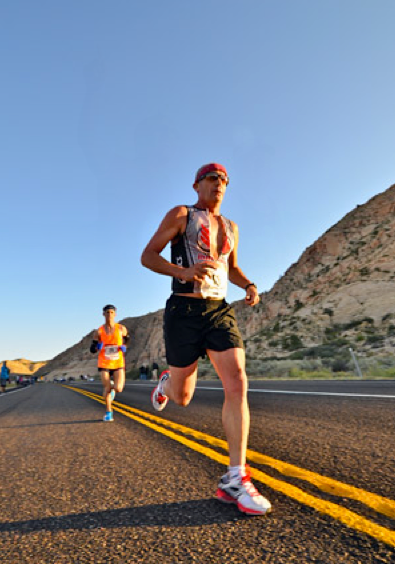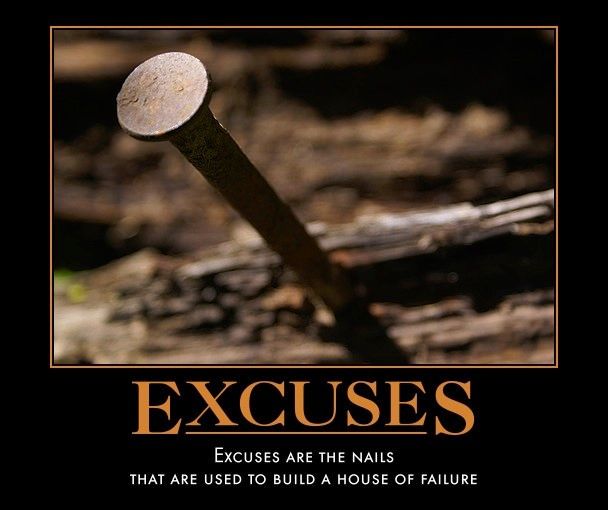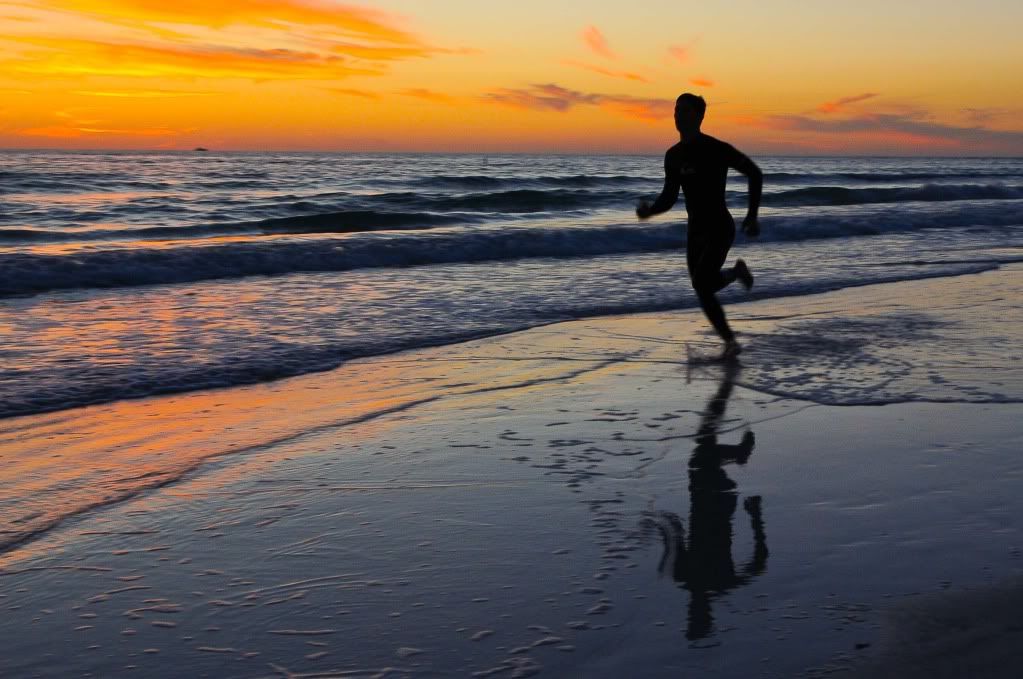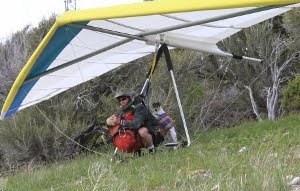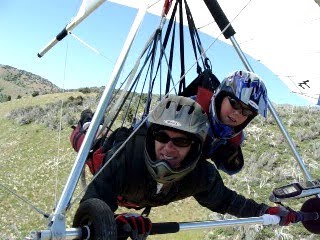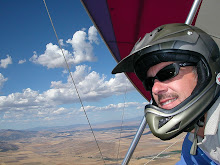...I began "running long" about 12 years ago at the age of 35, mostly as a form of therapy, stress release and a way to challenge myself. I am not a naturally gifted runner, and generally finish in the middle of the pack, and quite a ways down in my division. I never imagined that I would someday qualify to run in the Boston Marathon!

*The purpose of this posting is neither to call attention to myself, nor to solicit accolades, but rather to journal my running experiences and what I have learned before I forget. By doing so, hopefully I can learn from my mistakes and not repeat them, share what has worked for me, and help others reach their running goals. I am by no means an expert, and the information I share is not gospel, but I am happy to share what I have learned training for and running injury-free for over 30 marathons. I post this 'blog at the risk of allowing pride to sneak in, but I will seek to maintain humility by giving credit to God for helping me reach my running goals :-) In this posting, I will first list the Training Principles and then list the Race Day Guidelines which helped me reach my goals, in spite of my lack of natural talent. But first, a look back at my running roots...
Before I began this journey, the farthest I had run was a 10K. I have always been very active in sports and a wide variety of outdoor recreational activities, but had never considered running longer distances as "fun." In 2000 I began running longer, gradually building up my miles until I decided that I wanted to run a half marathon - something I had never imagined possible. In 2001, I realized this goal by running the Top of Utah Half Marathon! I had so much fun, I set a new goal to run a full marathon, but I was too late to get into the Top of Utah full marathon that year.
I was hooked on everything about "the marathon" distance - and running in general. I found so much fulfillment, spirituality, physical and mental challenge in running, as well as the camaraderie, adventure, race day excitement, community unity, spirit of volunteerism, sense of accomplishment, and many life lessons which I have learned through running! As I logged mile after mile, and race after race, I gradually learned how to run and train smarter and my finishing times slowly improved. At some point I set the goal to run a time fast enough to qualify for the Boston Marathon - the world's oldest, modern annual marathon, originating in 1897... It seemed impossible at the time, as my fastest time up to that point was 14 minutes too slow, and I didn't see how I could possibly run more than a couple minutes faster. I was not obsessed with the goal, and my "success" or satisfaction with running marathons was not based on reaching this lofty aspiration. So, I kept it tucked away in the back of my mind, and just continued to enjoy each mile and race, regardless of a BQ or not!
As my conditioning improved over the years, I fine-tuned my running mechanics, talked to other runners, read books and 'blogs, learned how to properly eat and hydrate between and during runs, developed smarter race day strategies and tried to learn by experience along the way. In 2011 it all began to come together, and my race times improved until I finished the Pocatello Marathon within 6 minutes and 24 seconds of a BQ. With St George later that year, I knew I had a chance! Then I found out that the qualifying times would change just days before the 2011 St George, requiring a time that was 5 minutes faster! I accepted that it would not happen, ran a great race, but still came up about 8 minutes short - which would have been within 3 minutes, had they not shortened the time standards!
After spending my Winter hiatus considering giving up on chasing the BQ dream, in the Spring of 2012 I laced up my shoes and went back at it, signing up for a number of marathons. In September I held back during the Top of Utah marathon, knowing that my best chance for a fast time would be at St George. The morning of October 6th, I did not feel particularly fast as I crossed the start line at St George, but little did I know that there would be some "race day magic!"
...Drawing from personal experience, what follows are the Training Principles that have helped me have an enjoyable, rewarding, injury-free ongoing running career. After years of patience and persistence, these lessons learned allowed me to accomplish all of my running goals. The following list may seem like small or trivial things, but if each one shaves one minute off of your overall marathon time, combined they could result in a 20 minute faster time! For a novice runner such as myself, minutes, or even seconds could be the difference between running a BQ, or not. Although many of you will progress much faster than me, there are no shortcuts, and no substitute for putting in the miles. Even naturally gifted runners must put in the miles, train smart, and follow good training principles in order to reach their full potential. These principles are followed by "Race day Guidelines" which I have learned from experience - some of which I had to learn the hard way. If I can BQ - You can Too!
Marathon Training Principles:
2. Consistency is key in your training schedule: Unless you are a gifted, freak of nature you cannot just get up one day and run a marathon without training. There are no shortcuts and no substitute for hard work. You must put in the miles consistently over at least a four month period, or you will suffer beyond mile 18 on race day. Many people have the desire to run a marathon, but few are willing to put in the miles for months to prepare. Coach Paul "Bear" Bryant said, "It's not the will to win that matters - everyone has that. It's the will to prepare to win that matters." Find a 16 week beginner schedule, such as one at marathonrookie.com, print it off, then follow it as well as your schedule and health will allow. Vary your workouts, and utilize regular tempo runs to increase your lactate threshold and teach your body how to more efficiently use oxygen for metabolism. The net result of tempo training is an increase in your speed over distance, and faster race times! As I am, obviously, not as young as I used to be, I make sure and schedule rest days between workouts, and never run hard two days back to back.. I follow a modified version of this, running only 3 days a week: Tuesday, Thursday and my weekly long run on Saturday. The book, Run Less, Run Faster advocates three running workouts per week, supplemented by cross training.
3. Long Runs are important: Your weekday runs can be more flexible, depending on your schedule and ability to recover. Your weekly long run is more important, and should not be skipped if at all possible. The formula I follow is to run a combined total of miles during the week equal to the scheduled long run mileage on Saturday. Most marathoners agree that any training program should include at least one, if not two long runs of 18-20 miles, usually 3-4 weeks before race day. When your long runs get beyond 9 or 10 miles, you must practice and learn how to hydrate and eat on the run. Treat these long runs like race day to learn what works best for you regarding your night before routine, "pre-race" breakfast, clothing, hydrating and eating on the run. If any one of these aspects do not work on your long training run, make changes until you figure out what does work, and then follow these on race day. I generally try to run at my "goal race pace" on my long runs. In other words, if my goal is to run a 3:30 marathon, my long run pace is 8:00 minutes per mile. (I will address this a bit more when talking about "pace.")
4. Gradually build your miles: Do not increase your total weekly mileage or your weekly long run distance by more than 10% per week!! (Hear me now and believe me later!) Many people feel so good about their progress, that they violate this rule, and end up injured and frustrated. Non-injury mileage build-up takes time and patience. Most of my running acquaintances that I have seen struggle with injury, violated this "10% rule."
5. Be flexible and listen to your body: Don't ignore pain which is more than expected soreness after workouts. Although consistency is important, staying healthy must be a priority if you want to make it to the starting line. Rest and ice injured areas and cross-train as much as needed to solve the pain. As your training progresses and miles increase, you must develop an increased tolerance for discomfort and soreness, but outright pain should not be ignored.
6. Eat to run - before, during and after: Proper nutrition is important, as your body needs fuel to run, and the components to rebuild muscles and recover after workouts. There are many different diets advocated in the running blogosphere. I will not recommend any specific one, but tell you what generally works for me: My diet focuses on carbohydrates before a run, and on lean proteins afterwards. Eating protein within an hour after a training run helps me recover more quickly as my muscles rebuild. I don't drink soda or any carbonated drinks. I also avoid saturated less-healthy fats, but I do eat a reasonable amount of healthy fats, such as those in nuts and fish. I only eat red meat once or twice a month, but I do eat chicken and fish 3 or 4 times a week. I also eat fresh fruits and vegetables regularly - especially bananas. On long runs and on race day, you must also be able to consume calories on the run, or you will bonk. Exactly how many calories per hour and in what form depends on many factors. Use your long runs to determine what your body requires and to find out what works for you. I have found that to maximize my potential on long runs or race day, I eat a light breakfast of yogurt, half of a bagel, cream cheese, half of a banana and some peanut butter an hour or more before starting time. Then I consume one Clif Gel every 4 miles, or about 2 per hour, along with half of a banana every 2 miles beyond the 20 mile mark. I have also used chia seeds or chia gel to help stabilize my blood sugar and maintain hydration. *(Nutrition is a science, and I'm sure I could do much more to improve my eating and performance in this regard.)
7. Hydration: Proper hydration is critical to performance on long runs and race day. The consequences of insufficient hydration will at a minimum be a decrease in pace and performance, and may also result in severe leg cramps, or even life threatening conditions. The exact amount needed per hour will depend on each individual, but generally I try to alternate consuming a small water bottle and a similar amount of Powerade every 4 miles. Water only is okay up to 10 miles, but beyond that electrolytes must be supplemented to help maintain the body's balance and prevent muscle cramps. On training runs, I try to plan my route around reliable water stops, or I make advance water bottle drops on my planned route, or I will carry a water bottle. On race day, I walk through every aid station (usually every 2-3 miles) and alternate drinking a cup of water and a cup of Powerade. This must be done at every aid station, especially the early ones when you may not feel thirsty yet. If you wait until you are thirsty, your performance is likely already suffering, and you cannot catch up in a short amount of time.
8. Rest and Sleep: Your rest days are as important, if not more important than running days - especially as your age increases. At age 47, my body just does not recover as quickly as it used to. This doesn't mean I still can't consistently improve, it just means I have to train smart. For this reason I only run three days a week, allowing a rest day between each weekday run and two recovery days after each long run. Getting adequate sleep at night is also important. This is the time when your body re-builds and recharges.
9. Gotta be da shoes! Find a good pair of running shoes which fit your foot and running style, and stick with them. A half size larger is a good idea, to allow for foot swelling on longer runs, and prevent toenail loss. Expect to spend 60 to 100 dollars on a good pair of running shoes. You may want to get your first pair at a specialty running store to find the right shoe. Once you find the right shoe, find the same model on the internet for a lower price. Keep a running logbook, tracking the miles for each new pair of shoes. Most people will get about 600 miles out of a pair of shoes, and up to 800 if you are lighter on your feet. I can tell I am due for a new pair when I feel a twinge of pain on the outside of one knee. I check the miles and I am usually right near 750. The shoes may still look fine, but the cushioning is worn down, and it is not worth risking injury to squeeze extra miles out of them. I use my "expired" shoes for yard work or other projects. Also, avoid trying new shoes or gimmicks in the middle of the season when you are running longer, as this is an invitation for injury. If you are considering trying a different shoe style or model, wait until the off-season when your weekly mileage has significantly decreased.
10. Socks, shorts and shirt: For years I ran with thin, wool ankle socks, but last year I tried out calf high compression socks. I found little benefit on my short or medium runs, but they do make a difference for me on long runs and race day. The compression socks increase circulation, and reportedly increase overall performance. They also reduce leg cramping, and seem to speed recovery. You can spend a good chunk of money on actual running compression socks or calf sleeves, but I just use the less expensive circulation stockings for reducing diabetes lower leg symptoms, found on the pharmacy aisle. I recommend running with actual lightweight performance running shorts and tank or shirt. Running with basketball shorts and a cotton t-shirt creates more resistance against your arms and legs, and forces you to carry more weight. This may not seem like a big deal, but over 26.2 miles, maximizing efficiency can translate into savings of minutes!
11. Pace: As you start your training schedule, you should run at a pace that does not elevate your heart rate to the point beyond which you can carry on a conversation. Use this pace to build a solid mileage base. At first don't worry about your exact pace, just find one which allows you run your entire scheduled distance. A month or two into your schedule, you can begin monitoring your pace. I like to calculate my route distance with an online program such as RunningAhead.com. I determine my total elapsed run time with a wristwatch, then use an online pace calculator, such as coolrunnings.com, to calculate my overall pace. On my weekly runs, I may run some at faster than race pace (speed work), some with intervals or fartlek training, and some at my marathon goal race pace (MP). On long runs, some training programs advocate "Long Slow Distance" (LSD) runs at slower than race pace. This may be good if training for your first marathon, but I was unable to decrease my total race times and even come close to a BQ time until I began running my long runs at my goal marathon race pace or MP, which for me was 8 minutes per mile.
12. Cadence, Form, Mechanics and Economy: Running a BQ is not just about running fast for 26.2 miles. It is also about finding a cadence, stride and running style which your body can maintain for the duration, while at the same time reducing the chance for injury. Developing a stride with a cadence of 85-90 foot strikes per minute per foot naturally encourages a shorter stride with a mid-foot strike while the front leg still has a slight bend at the knee, and quicker foot turnover. The net result is reduced stress and impact on the lower body and improved pace, speed and race times. Using good overall form, such as minimal side to side arm swing, relaxed hands and shoulders, slight forward lean, can all help contribute to maximizing overall running economy and efficiency. Look for every opportunity to eliminate any wasted energy in your form and mechanics. The book Chi Running has many ideas to help with this part of fine tuning your running technique and mechanics. Finding your optimal body weight will also maximize your efficiency. Extra weight means extra work, but allowing your body fat percentage to drop too low will cause your performance to suffer on longer runs and race day. When I began running marathons, I was a bit too scrawny (5'9" @138 lbs) - but when I finally qualified for Boston I had allowed my body weight to hover around 148 lbs, which seems to be my optimal running body weight.
13. Run to the beat: At first I did not run with any music, as I enjoyed the time to think or meditate, listen to the rhythm of my feet below me, or just enjoy my surroundings. As I began fine-tuning my pace and cadence, I found music to help with my goals, with a beat similar to my goal race pace cadence, and loaded up my ipod shuffle. Lately, it is mostly Foo Fighters, Chili Peppers and a few others. This can be especially helpful on long runs and race day when pace can be critical to not going out too fast, and ultimately help reach my goal time.
14. Hills are our Friends: Make hill work part of your regular training regimen. Plan routes which include both uphill and downhill, especially if your next race has significant climbs or descents. Hill work adds challenge and variety to your training, and improves strength and conditioning for muscles which you may not use as much when training on the flats. Regular hill work will also help prevent race day injury.
15. Cross Train: Using cross training to supplement your running can have many benefits, including injury prevention and improved overall fitness. Upper body and core strength and conditioning will improve your running performance and overall times. I have used activities such as swimming, cycling and hiking for cross training.
16. Follow your taper schedule the last 3 weeks before race day. Hear me now and believe me later! At this point, "the hay's in the barn" and "rest is best." RESIST the urge to run a little "extra."
17. You can achieve what the mind believes: This is not to say that that you don't have to train and prepare. Keep a log book to track your miles and progress, and to remind you when doubt starts to creep in that you actually have done the work! Once you have done your part to prepare, believe in yourself, if you are so inclined - turn it over to God, visualize your success, then get out and make it happen! Sometimes we set up our own mental barriers which can prevent us from reaching our goals. Sometimes we keep a number of handy excuses at the ready, and allow ourselves to fail. We must dare to believe, although there is a fine line between believing in yourself and overconfidence.
18. Success is Not the absence of failure.. it is Persevering in spite of falling short of your goals! It is important to learn from each training run, and especially each race - even if you don't make your goal time and qualify for Boston. I consider every marathon which I finished as a success. In my opinion, the people who dare to dream - who dare to cross the starting line, are all champions. Thomas Edison, having "failed" over 6,000 times before finally inventing the light bulb said, "Our greatest weakness lies in giving up. The most certain way to succeed, is always to try just one more time." Babe Ruth, who struck out 1,330 times on his way to his record-setting 714 home runs said, "Never let the fear of striking out keep you from playing the game."
19. Run for a Reason: Different people run for different reasons - find purpose and meaning in your running, dedicate your race to a cause, and it will inspire and motivate you to put in the training miles and hang in there on race day. By doing so, you will likely help others along the way who may face similar challenges as you! I have witnessed amazing people with staggering physical, mental and emotional challenges not only overcome their life struggles, but also finish a marathon. If you find yourself lacking motivation to stick to your training schedule, watch an inspiring running movie, such as Chariots of Fire, St Ralph, Prefontaine, The Long Run, or another one of your own choosing. Get out and volunteer at a marathon aid station, look into the eyes of participants and see that they come in all ages, shapes, sizes, and abilities. Search the internet for "inspirational marathon stories" and you will find a plethora of people with little or no running talent, who set a goal to run a marathon and then put in the miles to be able to realize that goal!

20. Run for Fun!! Although as your training progresses, you do have to start watching your pace and be dedicated, don't forget to enjoy the journey. Some days run without a watch, just for the sake of running. In my off season (December, January and February) I simply run for the sake of running, about once a week, as the weather allows, and I don't worry about pace time. For me, running can be a great time to ponder various challenges and have a "running conversation" with God (pun intented :-)). A nice run can be a great form of therapy - better than any shrink or counselor for getting my head on straight! Running a marathon - or just running in general, can be a metaphor for life. There are so many life lessons running can teach, if you just open your mind - such as "I can do Hard things," "Put one foot in front of the other," "One step at a time," etc. Books can be written on lessons learned from running! Remember to take the time to enjoy each moment, to notice the beauty all around you, and appreciate the feel of your body moving as the ground passes under your feet! Goals are important, but remember what LDS General Authority Dieter F. Uchtdorf said, "Sometimes in life we become so focused on the finish line, that we fail to find joy in the journey."
- Focus your diet on carbohydrates in the days leading up to race day, stay well-hydrated the day before and get a good carb-loading meal by 6 or 7 pm the night before.
- Avoid too much physical activity the day before the race, such as hiking, biking, swimming or excessive walking. If you like to plan "marathon vacations," plan activities the day before the race which will not leave you tired. Remember, your goal is to make it to the starting line rested, healthy and well-trained.
- Prepare and lay out your race day clothing the night before. Put your bib number on your shirt and try it on to verify placement. Prepare your race day breakfast and put it in a bag in the refrigerator, so you can roll out of bed, put on your running clothes, grab your breakfast, and catch an early bus.
- Set 2 alarms for race morning. Buses usually start loading between 4 to 5 am. After all you have done to prepare for this day, make sure you are not late!
- Get to bed at a decent hour - but don't worry if you don't sleep well due to pre-race jitters. Try to get a full nights sleep the night before race day eve. Your body will do okay even if it only gets a few hours the night before.
- Approach race day like any other long training run. This helps me not get "psyched out" by the sheer magnitude of race day. Follow the routine which you have developed, and don't try anything new on race day - such as shoes, clothing or foods. Stick to what has proven effective on your long training runs.
- Wear enough warm-up clothing to the start line to stay warm at the estimated pre-race temperatures. I wear light warm-up pants, a fleece jacket and a stocking cap, so that I can lay down, relax and not lose any energy shivering during the hour and a half before start time. A closed-cell foam pad is great for a ground cushion during your pre-race meditation and visualization. Extra warm-up clothing can be put in the drop bag 15 minutes before start time, and will be transported back to the finish line for retrieval after the race. Use a marker the night before to put your bib number, name and phone number on your drop bag.
- Line up with the pace group matching your goal finish time. Don't crowd the start line, especially when the race provides chip timing for each runner. I always set 3 goals for race day: my "best day" goal, which is my BQ time, a middle goal time if I find myself struggling with "the wall" or cramping, and an overall goal if "the wheels fall off" - which was simply to finish the race. Regardless of my overall time, I always consider a race successful if I finish it without injury.
- Avoid the temptation to "bank time" early in the race. This is a very common first-timer mistake. Select a pace that is within your training, fitness level and abilities - which fits your overall race plan and will put you in a position to hit your BQ time. Use common sense when evaluating the grade and course profile, but generally speaking, forcing yourself to run a reverse split to hit your race time goal is best. In other words, you want to run the last 13 miles faster than the first half. It only took me 30 marathons before I learned this and was finally able to BQ, by running a 1:45 first half, and a 1:38:20 second half.
- Run your own race. Plan your race and race your plan. Based on the course and elevation profile, determine your average pace for the first half, set your first half split goal, and your average pace needed for the second half. If you have family or friends that you train with, decide before race day if you plan to run together the entire race or not. If your goal is to run your fastest time and BQ, I would recommend not trying to run alongside someone else. Each of you will have your own desired pace at different points throughout the race, which will likely not match the others. The end result is lost efficiency, wasted energy and potential frustration. Training runs, pre-race expos, start line preparations and finish line recovery areas are great opportunities for socialization and camaraderie. But if you want to maximize your race day potential, focus on these principles during the race to squeeze every extra second and minute out of your race time.
- Run the tangents. Each marathon course is measured and certified based on the tangents, which is the shortest legal distance on the designated course. Because there are hundreds or thousands of other runners on the same course, you will not be able to run perfect tangents, but do your best without interfering with other runners. Failing to run the tangents can add tenths or even a quarter of a mile to your marathon distance, which can add minutes to your time.
- Walk through every aid station, and drink a cup of water and Powerade at each one if possible. Before slowing to a walk, check over your shoulder to avoid impeding other runners, then I like to walk through the aid station behind the tables and help myself to the fluids as I quickly walk by. Eat adequate calories regularly throughout the race, as you have learned from your long training runs. Walking through aid stations, hydrating early and regularly, and consuming adequate calories will all work in your favor to push "the wall" beyond the finish line, and allow you to finish strong. If you wait until you are thirsty and hungry before hydrating and eating, you have waited too long, and your pace will suffer. I have learned that I must get adequate fluids and food early in the race, because by mile 20 my stomach may not take any more.
- Stay Positive! This begins with your training, but is especially important the week before a race and on race day. Once you put in the miles and make it to the starting line, you must add mental toughness to overcome thoughts of stopping or giving up in the later miles. Replace any negative thoughts with positive, and smile often during the race, especially when you don't feel like it! George S. Patton, US Army General and 1912 Olympian said, "Now if you are going to win any battle, you have to do one thing. You have to make the mind run the body. Never let the body tell the mind what to do. The body will always give up. It is always tired in the morning, noon, and night. But the body is never tired if the mind is not tired."
- Summary: I hope the above Training Principles and Race Day Guidelines help you not only reach your running goals injury-free, but also learn to enjoy every mile you run! Although some training runs and races are not easy, the rewards can be incredible - not only physical, but also emotional and spiritual. The above principles and suggestions are just my opinion, and are not all-inclusive - but my experience has shown that they work for me. They can help you reach the goal of simply running your first marathon - or if that doesn't cure you - help you set your sights even higher and qualify for Boston! You can Do it, if you set your mind to it - and are willing to put in the miles!
*An extra Big Thanks to Keri, Josh, Tanner and Landon for your support and tolerating my running madness! I also give all credit to God, and give thanks to Him for the desire and ability to run!
*If I can do anything to help you reach your running goals, please feel free to post a comment and I will contact you.



